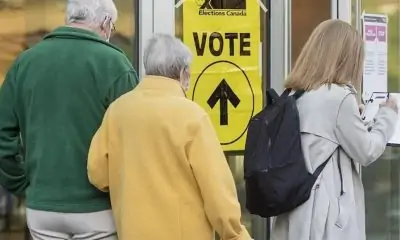LAS VEGAS (AP) — Crystal chandeliers that once glimmered above a swanky lounge, bright blue costume feathers that cloaked shimmying showgirls, and fake palm trees that evoked a desert oasis are just some the artifacts making their way from the latest casino graveyards of Las Vegas into Sin City history.
The kitsch comes from the Tropicana, which was demolished in a spectacular implosion Oct. 9 to make room for a new baseball stadium; and from The Mirage, the Strip’s first megaresort, which dealt its last cards in July and is set to reopen as a new casino nearly 40 years after it originally debuted.
As the neon lights dimmed and the final chips were cashed in, a different kind of spectacle unfolded behind the casino doors. Millions of items big and small were meticulously sorted and sold, donated and discarded.
“You take this hotel-casino and you turn it upside down, shake everything out of it until it’s empty,” said Frank Long, whose family business, International Content Liquidations, led the effort to unload the Tropicana’s merchandise before its implosion.
Long, 70, a third-generation auctioneer, likes to say he’s in the business of “going, going, gone.” He jokes that his Ohio home is “decorated in early hotel,” having helped clear out dozens of them as well as casinos across the country. In Las Vegas, that includes the Dunes, Aladdin and Landmark.
“Vegas buyers are special,” Long said. “This is their community, and they want a piece of it.”
Trolling for a piece of history
On a hot day in June, two months after the Tropicana shut its doors, Long welcomed buyers onto the casino floor.
The whirring slot machines were long gone, transferred to other casinos. In their place sat an odd collection of things: desks and chairs, rattan night stands, table lamps, pillows and sofas. Piled high in what was once the high-limit gambling room were mattresses and box springs. Small crystal chandeliers going for $1,000 hung suspended from old luggage carts.
“Fill up your entire truck for 100 bucks,” Long told shoppers, grinning.
Buyers of all ages filled wagons and luggage carts with arm chairs priced at $25, mirrors at $6, floor lamps at $28. Behind red velvet ropes where guests used to check in, customers waiting to pay stood in line with 43-inch flatscreen televisions. One man hugged a mattress and box spring, trying to keep them from toppling over.
In the Tropicana’s vast conference hall, piles of large vintage spotlights labeled “FOLIES” sat in waist-high bins marked for donation. They were off-limits to buyers, destined for the Las Vegas Showgirl Museum.
The Tropicana was home to the city’s longest-running show, “Folies Bergere,” a topless revue imported from Paris. Its nearly 50-year run helped make the feathered showgirl one of the most recognizable Las Vegas icons.
Elvis’ image among the forgotten treasures
One of Long’s favorite parts about the job is sifting through forgotten corners of casinos.
Inside the Tropicana, his team rescued black-and-white photographs of stars who wined, dined and headlined there. His favorite was a candid photo of Elvis Presley found in an unused office.
In its heyday, the casino played host to A-list stars including Elizabeth Taylor and Debbie Reynolds, Frank Sinatra and Sammy Davis Jr.
Long said his people have fun with the job, too. The tedium of collecting several thousand pillows from the Tropicana’s two hotel towers turned into “the world’s biggest pillow fight.”
When Sarah Quigley learned the Tropicana was closing, she knew she needed to act fast if she wanted some of the casino’s historical records for the Special Collections and Archives at the University of Nevada, Las Vegas.
Quigley, director of the special collections, wasn’t the first to call.
But after a meeting with the Tropicana’s management team, UNLV’s special collections acquired five boxes of records from 1956 to 2024, including vintage 1970s ads for the Tropicana’s showroom, old restaurant menus, architectural blueprints and original film reels of the dancing “Folies” showgirls rehearsing in the mid-1970s.
Salvaging the neon Vegas is famed for
The Neon Museum, which rescues iconic Las Vegas signs, got the Tropicana’s red one and The Mirage’s original archway that welcomed guests for 35 years. In a herculean effort, the 30-foot sign was placed on a flatbed truck in August. A chunk of the Strip closed so the piece could be slowly driven to its new home at the museum.
The Mirage opened with a Polynesian theme in 1989, spurring a building boom on the Strip that stretched through the 1990s. Its volcano fountain was one of the first sidewalk attractions, and tourists flocked to the casino to see Cirque du Soleil set to The Beatles or Siegfried and Roy taming white tigers.
In just a few years, the Strip’s skyline will look different. The Mirage will become the Hard Rock Las Vegas in 2027, with a hotel tower shaped like a guitar. The following year, the new baseball stadium is expected to open on the former site of the Tropicana.
While the last of the Tropicana’s buildings came tumbling down in 22 seconds, pieces of the Las Vegas landmark have found a new life in nearby museums, curated collections and homes.
“There’s history here,” said Aaron Berger, executive director of the Neon Museum. “You just have to look past the glitter to find it.”
___
Associated Press video journalist Ty O’Neil in Las Vegas contributed to this report.

























